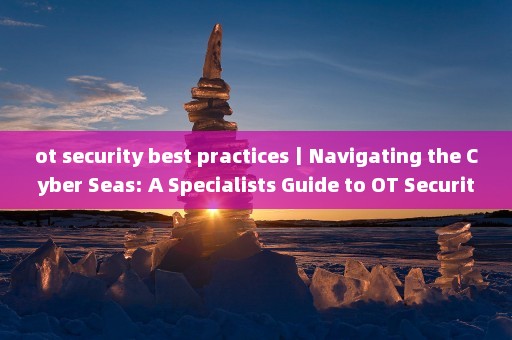As an OT security specialist, I often envision the industrial networks I protect as vast, intricate oceans, teeming with life and opportunity, yet fraught with hidden dangers. Picture this: it's the dead of night, and under the glow of a full moon, I stand on the deck of a colossal factory ship, its towering silhouette an amalgamation of steel, wires, and digital wonder. The air is crisp, filled with the hum of machinery and the distant echo of data streams. I'm the captain of this digital domain, and my mission is clear—safeguard the ship from the treacherous tides of cyber threats. Join me as I share my journey and the OT security best practices that are our lifeline in these uncharted waters.

Charting the Course: Understanding the Basics
Before we can effectively defend our vessel, we must understand the landscape. Operational Technology (OT) systems—those that manage industrial processes and critical infrastructure—differ from Information Technology (IT) in significant ways. They were designed for reliability, often at the expense of security. My first lesson? Treat OT systems with the respect they deserve, and tailor your security approach accordingly.
1. Conduct a Comprehensive Risk Assessment
Every journey begins with a map, and in OT security, that map is a thorough risk assessment. I've learned that this is more than just an exercise in documentation; it's an opportunity to truly understand the unique risks facing your network. Here's how I approach it:
- Identify all OT assets: Systems, devices, and even legacy equipment that may be overlooked.
- Assess vulnerabilities: Determine the weaknesses in your systems, including outdated software and configurations.
- Analyze potential threats: Consider both internal and external risks, from accidental human error to targeted cyber attacks.
- Evaluate consequences: Understand the impact of a security breach, not just on operations but also on safety and compliance.
2. Secure the Perimeter: Network Segmentation
Imagine your factory ship as a series of isolated decks, each with its own unique purpose and access points. Network segmentation is the practice of creating these metaphorical bulkheads, limiting the movement of traffic between networks and containing potential breaches. Here's a crucial tip: segmentation should be both physical and logical. I've seen firsthand how dividing networks into zones can minimize the blast radius of an attack.
Navigating the Rough Seas: Implementing Protective Measures
Armed with a clear understanding of our environment and the risks involved, we can now chart a course towards implementation. These are the strategies that have served me well in the face of the storm.
1. Armor Up: Deploying Protective Technologies
Just as a ship requires a strong hull to weather the elements, our OT networks need robust technological defenses. Here are the essentials:
- Firewalls: Install dedicated OT firewalls to monitor and control traffic between networks.
- IPS/IDS: Intrusion prevention and detection systems serve as our lookouts, alerting us to potential threats.
- Antivirus Software: Deploy specialized solutions that can detect and neutralize malware targeting industrial systems.
- Encryption: Secure data both at rest and in transit, ensuring that even if an attacker boarded our ship, they couldn't decipher our charts.
2. Crew Training: Educating Personnel
Even the most advanced systems are only as strong as the people who operate them. I've learned that investing in crew training is essential. Educate your personnel on:
- Security Policies: Ensure that every crew member understands and follows the protocols in place.
- Phishing Awareness: Teach them to recognize and report suspicious emails or links that could lead to an attack.
- Incident Response: Train your team to act swiftly and effectively in the event of a security breach.
Weathering the Storm: Incident Response and Recovery
In the face of a cyber tempest, preparation is key. As an OT security specialist, I've been through my share of battles and have learned the importance of a well-executed incident response plan.
1. Develop an Incident Response Plan
Just as a captain must be prepared for any emergency at sea, having a detailed incident response plan is crucial. It should include:
- Step-by-step procedures for containing and mitigating the impact of a breach.
- Clear communication channels and points of contact for reporting incidents.
- Regular testing and updates to ensure the plan remains effective against evolving threats.
2. Learn from the Voyage: Post-Incident Analysis
Once the storm has passed, it's time to assess the damage and learn from the experience. Conduct a thorough post-incident analysis to:
- Determine the root cause of the breach and address any systemic issues.
- Update security measures and policies based on lessons learned.
- Share insights with your crew to improve overall preparedness.
Final Thoughts
As we sail the vast cyber oceans, the threats we face are many, but with the right strategies in place, we can navigate these waters with confidence. Remember, OT security is a journey, not a destination. It requires constant vigilance, adaptability, and a commitment to learning from our experiences. By following these best practices, we can keep our industrial networks secure, ensuring a smooth voyage for all who depend on us.
Until next time, my friends, may your sails be full and your networks secure.
Post a comment

Comment List